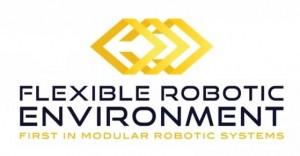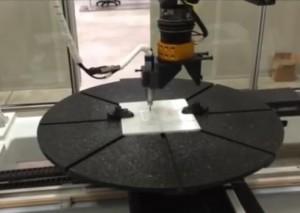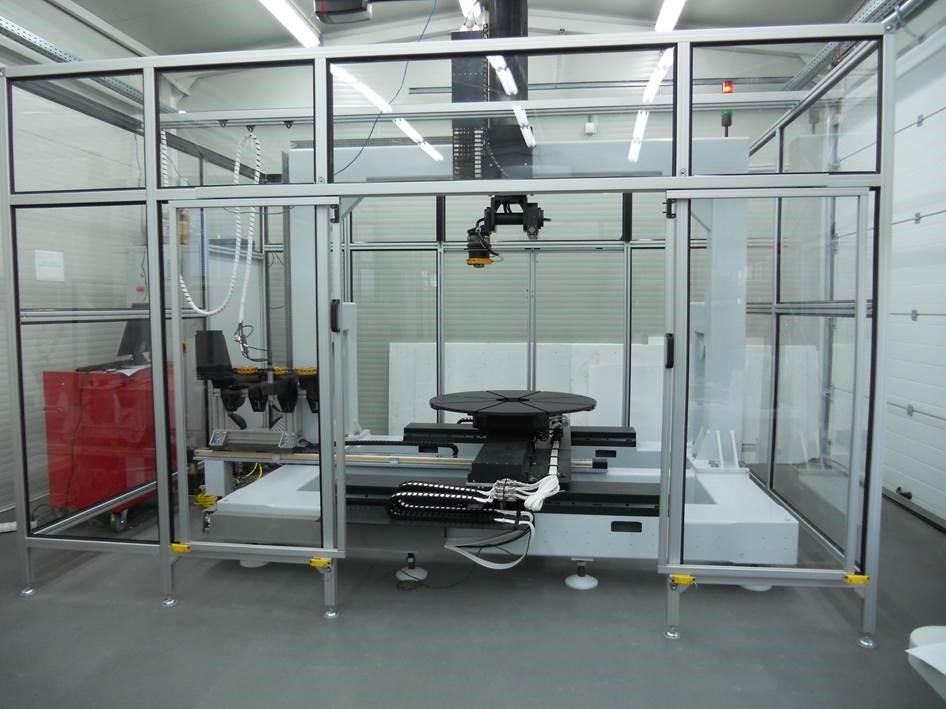If you are into science fiction like I am, then you probably have read your share of futuristic novels, novels which envision a future, not too far from now where almost all manufacturing is done by robots, leaving only  management, programming, and decision making up to human beings. This future may be getting quite a bit closer.
management, programming, and decision making up to human beings. This future may be getting quite a bit closer.
Most who envision a robotic workforce usually imagine hundreds of machines, which are constructed in the likeness of human beings; two arms, a head, and two legs. They then picture these machines chaotically working together to produce whatever items the job calls for. In actuality a robotic workforce likely will not resemble anything remotely like this. What the future robotic manufacturing facility may look like, is probably a lot like that found in today’s high tech facilities. In fact many companies are already using computer controlled machines to produce goods at a fraction of the cost of human labor. Instead of robots in the likeness of people, we will have facilities packed full of sophisticated machines, capable of manufacturing items via several different types of additive and subtractive methods. One machine will be able to print out metal objects, scan them to check for imperfections, and then use a subtractive cutting or milling process to perfect the shape and drill any needed holes into the object.
Does this sound like something that may still be years or even decades away? Well, it’s not! One company based in Rapid City, SD, called FRE™ ‘Flexible Robotic Environments’ has recently unveiled their latest all-in-one robotic manufacturing device, called the VDK6000 Robotic Work Center.
The VDK6000 is likely one of the most sophisticated robotic devices of its kind. Not only is it capable of both additive and subtractive manufacturing, but it works with a 6-axis Aerotech Motion setup over a huge build platform measuring 2 feet by 3 feet in diameter. The machine can be customized, per client, to feature numerous different technologies all in one device. The VDK6000 is capable of several different types of metal 3D printing. Different tool heads can automatically be added to the machine, as needed, to allow for any of the following methods of 3D metal printing:
Dynamic Gas Cold Spray
This is a very technologically advanced process of metal additive manufacturing. In fact, only a few companies, including General Electric are using such a process. How it works, is a supersonic gas jet sprays extremely fine metal powder (1-50 micrometers in size) towards an object. The shear velocity of these particles (Anywhere from 500-1000 meters/second) impacting an object causes the particles to undergo a process called plastic deformation, forcing the particles to adhere. Such technlogy can be used both to manufacture new parts, or recondition and add material to already existing parts.
metal powder (1-50 micrometers in size) towards an object. The shear velocity of these particles (Anywhere from 500-1000 meters/second) impacting an object causes the particles to undergo a process called plastic deformation, forcing the particles to adhere. Such technlogy can be used both to manufacture new parts, or recondition and add material to already existing parts.
Laser Additive Manufacturing
This is a process many of us are somewhat familiar with. A laser beam is able to melt metals as they are deposited on a build platform.
Direct Metal Writing
This is a process which utilizes aerosol jetting technology to print low viscosity inks out of metal materials. Typically with this technology, an aerosol stream of deposition material is focused, deposited, and patterned onto a 3D substrate. Such technologies have been used to print antennas for cell phones, as well as electrically conductive circuits, resulting in lighter weight and greener electronics.
If that’s not enough for you, then maybe the fact that the machine is also capable (dependent on the tools a client wants added) of scanning, as well as several types of subtractive manufacturing processes, as listed below:
- Milling
- Laser Scanning
- Ultasonic Inspection Tool
- Plasma Welding
- Grinding, Polishing, Drilling Mechanism
All this is managed by their MoDusCAM™ path-planning and process definition software.
“It is the only motion path planner and process definition application built directly in SolidWorks,” Patrick Olson, from Flexible Robotic Environment told 3DPrint.com. “Now operators do not have to export a .stp file to any other program. They export the motion path directly from SolidWorks to an HMI/Scada control of the machine. Working directly indie SolidWorks turns the designer into the robotic programmer. We believe this hybrid work center is quite an achievement, especially when we offer additive and subtractive motion path planning all from MoDusCAM™, built directly in SolidWorks. Now the users may stay in the environment they know and utilize all the tools of SolidWorks.”
The full capabilities and specifications of the VDK6000 can be found here. Without a doubt, this is the future of robotic manufacturing. Integrated multi-tooled systems, which can utilize an entire slew of additive and subtractive computerized manufacturing methods could speed up manufacturing, make it safer, greener, and cheaper. Let us know your thoughts on this amazing machine in the VDK6000 forum thread on 3DPB.com. Check out the video below of the VDK6000 in action.
Subscribe to Our Email Newsletter
Stay up-to-date on all the latest news from the 3D printing industry and receive information and offers from third party vendors.
You May Also Like
3D Printing News Unpeeled: A $3000 SLS System, Construction Subsidies and Parameters
The Housing Affordability Crisis is one of Canadian President Trudeau’s biggest issues. Now the government has made subsidies available, including scaling new technologies, 3D printed housing and libraries of reapproved...
“Bundled Light” Enables High Quality Plastic 3D Printing from LEAM
Naturally, we expect current 3D printing methods to continuously improve, but it continues to do so in the most surprising ways. The latest development comes from LEAM, a startup spun...
Each to Their Own: Exploring Creality’s Latest Ender Trio as the Company Strengthens Its Commitment to 3D Printing Advocacy
Creality has reaffirmed its commitment to promoting 3D printing. The launch of the Ender-3 V3 SE, Ender-3 V3 KE, and Ender-3 V3 showcases the company’s dedication to catering to diverse...
3D Printing News Briefs, March 23, 2024: AM in the US Coast Guard, Navy, & More
In today’s 3D Printing News Briefs, we’re discussing the use of 3D printing in various branches of the military, including the U.S. Coast Guard, the U.S. Navy, and the German...

































